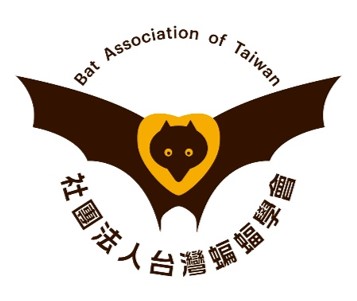蝙蝠研究
2020_光線亮度對東亞家蝠覓食時回聲定位叫聲的影響_陳威辰
出版年份:2020
研究生:陳威辰
分類:碩士論文
題目:光線亮度對東亞家蝠覓食時回聲定位叫聲的影響
Title:Effects of light intensity on echolocation calls emitted by Pipistrellus abramus in foraging
摘要:
回聲定位是食蟲性蝙蝠用以探索環境與覓食的主要方式,尤其是空中獵捕型(aerial hawking)的蝙蝠被認為甚少使用回聲定位以外的方式進行探索與覓食。本研究藉由在不同的光線亮度下,量測獵捕型的東亞家蝠(Japanese house bat, Pipistrellus abramus)於覓食時使用回聲定位叫聲頻率、頻寬,以及脈衝(pulse)時間間隔的改變,探討其與視覺使用的關聯。
本研究預期光線亮度較亮時,蝙蝠可以用視覺偵測較廣的範圍,因而會使用頻率較低的回聲定位叫聲協助尋找與確認距離較遠的獵物;且因視覺有助於辨識獵物體型大小,蝙蝠因而可使用頻寬較窄的脈衝來追蹤獵物;並因使用視覺偵測環境與獵物,而增加回聲定位的脈衝時間間隔;最後,不同光線下視覺輔助回聲定位在聲學變量的變化只會出現在獵物體型較大時。
本研究設置了一10 x 3 x 4 m的飛行帳,於帳內吊掛一麵包蟲作為實驗用的餌食。利用40隻成年東亞家蝠,每日每隻個體隨機在一種光線亮度(190、15或0勒克斯)下,連續三日完成三種亮度下在帳內的10分鐘覓食活動,期間以紅外線攝影機與超音波錄音機記錄其行為與回聲定位叫聲。實驗後,選取每次試驗中第一次攻擊獵物前的10筆搜尋期脈衝,以R語言進行重複測量分析(repeated measures ANOVA),並針對統計顯著之結果使用邦費羅尼校正(Bonferroni correction)進行事後分析,以檢驗光線亮度與各項聲學變量之間的關係。
實驗結果發現,針對大型獵物,不同光線亮度下蝙蝠在尋找期回聲定位叫聲頻率的變化相較於鎖定期更符合預期。而針對小型獵物,蝙蝠在鎖定期回聲定位叫聲頻率的變化也大致如預期地並不顯著。然而,不同光線下叫聲頻寬與脈衝時間間隔的變化則大多不符合預期。此些結果顯示,在不同光線亮度下,獵捕型東亞家蝠覓食行為時回聲定位的聲學變量有所變化,此些變化除與視覺的使用有關外,也會受到其他因素的影響。
Abstract:
Echolocation is the main way for insectivorous bats to explore and forage, especially for aerial hawking bats who were less known to use other ways to explore and forage. This study aimed to explore the relevance between the use of echolocation and vision of Japanese house bats (Pipistrellus abramus), an aerial hawking bat, by measuring the changes in frequencies, bandwidths, and interpulse intervals of their echolocation calls when foraging under different light intensities.
This study expected that when light intensity is higher, thus bats can use their vision to detect a wider range, their echolocation calls should be with lower frequencies to help identify preys at a longer distance and with narrower bandwidths because they can judge the body sizes of preys better based on visual cues, and the intervals of pulses emitted should increase with the aid of vision. Lastly, the effects on changes in echolocation calls with changes of light intensity should only be seen when the size of the prey is larger where the aid of vision in detecting preys is more effective.
This study set up a 10 x 3 x 4 m flying tent, and hanged a meal worm in the tent as a bait. Fourty adult Japanese house bats participated in a 10-minute foraging trial under 3 different light intensities (190 lux, 15 lux, and 0 lux) in a random order in 3 consecutive nights, with their behavior and echolocation calls recorded with infrared cameras and an ultrasound recorder, respectively. To test the relation between light intensity and each echolocation call variable, the last 10 search phase pulses before the first attack from each trial were selected, statistically analyzed in R using repeated measures ANOVA, and the post hoc analysis were performed with Bonferroni correction when the effects are statistically significant.
The results showed that when facing large prey, changes in the frequencies of bats’ echolocation calls in search phase were more in line with the prediction of hypotheses than those in the end of search phase. When facing small prey, changes in the frequencies of bats’ echolocation calls in the end of search phase were generally not significant as predicted. However, changes in bandwidths and interpulse intervals were not in line with the prediction. The results suggest that changes in echolocation calls of the aerial hawking Japanese house bats when foraging under different light intensities are likely related to the use of vision. However, other factors may also affect these changes.
